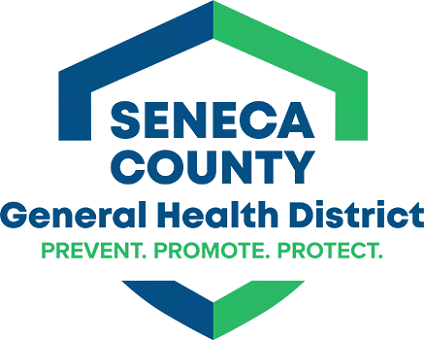FAQ
The air monitoring program was started to assess ambient air concentrations of hydrogen sulfide and sulfur dioxide by monitoring air emissions from the WIN Waste Innovations of Seneca County landfill. Landfills emit hydrogen sulfide as waste decomposes. Hydrogen sulfide is a source of nuisance odors. The landfill converts captured hydrogen sulfide to sulfur dioxide. Sulfur dioxide is a criteria pollutant. Long-term exposure to persistent levels of sulfur dioxide can affect sensitive populations.
The Seneca County General Health District (SCGHD), an approved health district through the Ohio Environmental Protection Agency, is responsible for licensing regulated facilities, inspecting solid and infectious waste and construction and demolition debris facilities, and taking the appropriate action required to ensure compliance with applicable environmental regulations. The SCGHD has retained Montrose Air Quality Services, a qualified air monitoring consulting company, to install and operate and maintain the air monitoring equipment.
The air monitoring program is being funded by the WIN Waste Seneca County Landfill through fees paid to the Seneca County General Health District.
No, this monitoring network was not established on the basis of a federal, state, or local requirement or mandate. The program was developed in response to feedback from the community and to assess community exposure to emissions from the landfill. Although the program is being conducted with monitoring equipment that would routinely be used in federal and state monitoring programs, including compliance with National Ambient Air Quality Standards (NAAQS), the data collected is not being used for determination of NAAQS.
The Clean Air Act, which was last amended in 1990, requires EPA to set National Ambient Air Quality Standards (NAAQS) for six principal pollutants (”criteria“ air pollutants) that can be harmful to public health and the environment.
The Clean Air Act identifies two types of national ambient air quality standards. Primary standards provide public health protection, including protecting the health of ”sensitive“ populations such as asthmatics, children, and the elderly. Secondary standards provide public welfare protection, including protection against decreased visibility and damage to animals, crops, vegetation, and buildings.
The data presented on the trends should only be used for information purposes against the standards.
The monitor report data continuously to the data management system. While short 5-minute data values can be interesting, there can be more variations in the values. Therefore, the pollutant (SO2 and H2S) data presented on the website include 1-hour averages to provide a more representative value that is comparable to the National Ambient Air Quality Standards, which are health-based, are generally 1-hour, 8-hour or 24-hour average standards, so a short-term reading (such as 1 minute) cannot be directly compared to an air quality standard.
The website contains the disclaimer that the data are preliminary and for informational purposes only. Data are subject to change following quality control and auditing. The website presents data in a near-real time basis and new data is uploaded very frequently.
Real-time data may be invalidated when the quality of the data is in question or could be inaccurate, which could happen for a number of reasons.
For example, a monitor may be undergoing maintenance or not meet an acceptability limit of a quality control or quality assurance check.
Full quality assured and validated data in formal reports is sent to the Seneca County General Health District.
